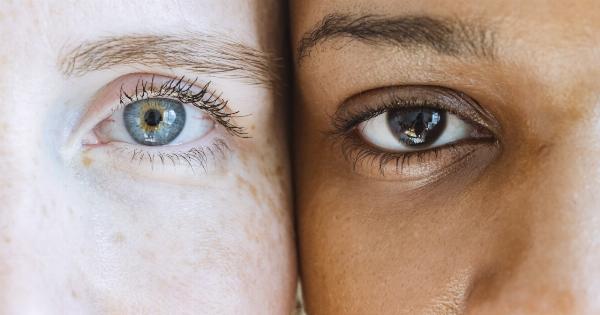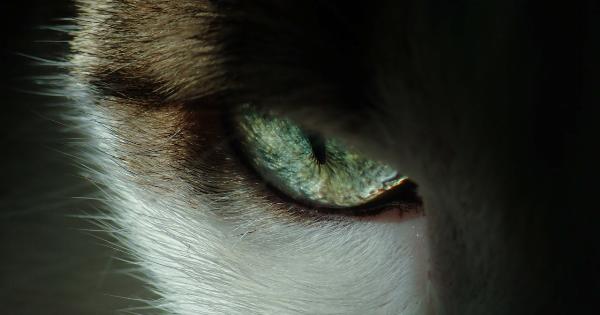Weather has long been known to have an impact on people’s emotional state. Rainy days often lead to feelings of sadness or gloominess, while sunny days can uplift one’s mood and bring about a sense of joy and happiness.
However, could there be another factor at play when it comes to how weather affects our emotions? Could our eye color actually influence how we react to different weather conditions?.
The Connection Between Weather and Emotions
Before delving into the potential role of eye color in the relationship between weather and emotions, it is important to understand the existing research on the subject.
Numerous studies have established that weather can indeed have a significant impact on our emotional state. For example, Seasonal Affective Disorder (SAD) is a well-known condition where individuals experience depression during certain seasons, typically winter when daylight hours are shorter.
This suggests that lack of sunlight can have a negative effect on our emotions.
Similarly, rainy weather has commonly been associated with feelings of sadness or melancholy. This could be due to the symbolism of rain being seen as a metaphor for tears, or perhaps the less pleasant experience of being wet and uncomfortable.
On the other hand, sunny weather is often linked to feelings of happiness and optimism. The warm rays of the sun can boost serotonin levels, a neurotransmitter responsible for regulating mood.
The Role of Eye Color
While the impact of weather on emotions is widely accepted, the potential influence of eye color is a relatively unexplored area of research. However, there are some intriguing theories that suggest a connection between the two.
One theory posits that people with lighter eye colors, such as blue or green, may be more susceptible to the effects of weather on their emotional state compared to individuals with darker eye colors, such as brown or black.
This theory is based on the fact that lighter eye colors contain less melanin, the pigment responsible for the coloration of our eyes.
Melanin is also involved in the production of serotonin, which as mentioned earlier, plays a crucial role in regulating mood. Therefore, it is plausible that individuals with lighter eyes may have lower serotonin levels, making them more vulnerable to fluctuations in weather conditions.
The Scientific Evidence
While there is limited research specifically examining the relationship between eye color, weather, and emotions, some studies have provided interesting insights.
One study conducted at the University of South Australia surveyed a group of individuals, assessing their eye color, weather preferences, and emotional responses to different weather conditions. The results indicated that individuals with lighter eye colors tended to have stronger emotional reactions to weather changes compared to those with darker eye colors.
Similarly, another study published in the journal “Personality and Individual Differences” investigated the relationship between eye color and mood.
The researchers found that individuals with lighter eye colors reported experiencing more mood changes in response to weather conditions compared to individuals with darker eye colors.
Possible Explanations
While the exact mechanisms that link eye color to emotional responses are still unclear, there are several theories that could explain this connection.
One possibility is that individuals with lighter eye colors may have higher sensitivity to light, making them more prone to intense emotional reactions when exposed to different weather conditions.
Additionally, it is worth noting that eye color is often associated with other genetic traits, such as skin pigmentation.
People with fair skin, which is more common among individuals with lighter eye colors, are known to be more susceptible to the effects of weather changes. It is possible that this increased vulnerability extends to emotional responses as well.
Implications and Future Research
The potential link between eye color, weather, and emotions raises interesting questions about our individual differences and how they may impact our psychological well-being.
Although the current body of research is limited, the findings so far suggest that eye color could indeed play a role in how weather affects our emotional state.
Further investigations into this topic could shed more light on the underlying mechanisms and expand our understanding of individual variations in emotional responses to weather.
It may also have practical implications, such as helping individuals with lighter eye colors better manage their emotional well-being during different weather conditions.
Conclusion
Weather undeniably has an influence on our emotional state, with rainy days often evoking feelings of sadness and gloom, while sunny weather can bring about happiness and optimism.
While further research is needed, there is evidence to suggest that eye color could play a role in how individuals react to different weather conditions. People with lighter eye colors may experience stronger emotional responses due to their lower melanin levels, which could affect the production of serotonin.
Understanding the potential link between weather, emotions, and eye color could provide valuable insights into the complexities of human psychology and individual differences.
As researchers continue to explore this fascinating area of study, we may gain a deeper understanding of how weather impacts our emotions and how we can better manage our psychological well-being.




























